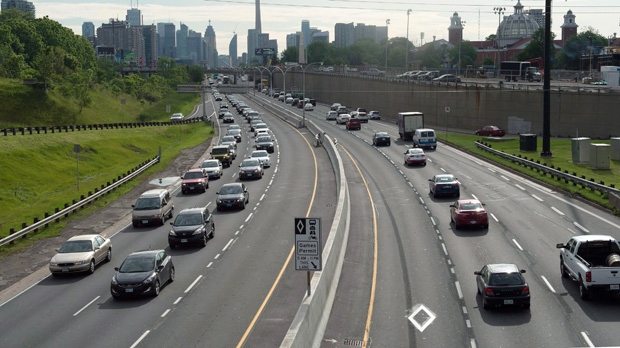TORONTO — Solo motorcycle riders could soon be able to use Ontario’s network of high occupancy vehicle lanes, a move the government said will bolster safety and cut congestion.
Single-rider motorcycles are currently barred from using the HOV lanes but the transportation minister said the province was planning to change the rules to better align with other jurisdictions.
“We’re looking at better safety for motorcyclists and (it will be) more environmentally-friendly,” Jeff Yurek said Monday. “It’s something that’s been requested for numerous years.”
Ontario currently has HOV lanes on Highways 403, 404, 417 and the QEW, and access to them is restricted to certain types of vehicles carrying at least two people. Drivers who break the rules can face fines of $110 and three demerit points.
The government posted the proposed changes to the Highway Traffic Act on its regulatory registry on Monday and is seeking public comment.
The previous Liberal government had said allowing solo motorcycle riders to use the HOV lanes did not support its goal of reducing the number of vehicles on the road.
But Yurek said the change will result in better traffic flows on busy highways.
“I don’t think we’re going to be flooded with motorcyclists using the HOV lane, but what we are going to do is give them the opportunity to be safe while they’re on the roadways,” he said.
“I’m pretty sure … drivers would be more than happy to know that the majority of motorcycles are going to be in the far left lane, the HOV lane, as opposed to being in your blindside by accident.”
Raynald Marchand, general manager of programs at the Canada Safety Council, said the proposed changes are good for motorcycle drivers. Many of Ontario’s HOV lanes are separated from other live traffic lanes, which protects motorcyclists, he said.
“You tend to have more space and even if the traffic is slowing there is no lane change in an HOV lane,” he said. “If a car decides to change lanes, and they haven’t checked their blind spot, you’re in a really tight spot.”
Dave Millier, chairman of the Motorcyclist Confederation of Canada, called the proposed changes a win for solo riders who are at risk in stop-and-go traffic on busy highways.
“They’re vulnerable road users,” he said. “If we can get the bikes into that faster flowing lane then it provides a level of safety.”
Millier said British Columbia allowed motorcyclists access to HOV lanes a number of years ago.
“Motorcycles are one of the first riding communities that they addressed by putting them into those lanes and asking them to use them,” he said.
